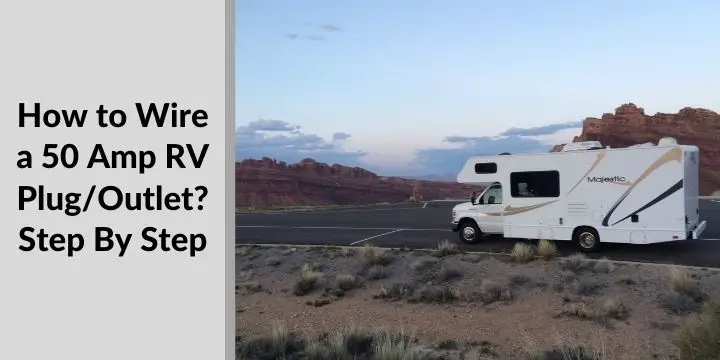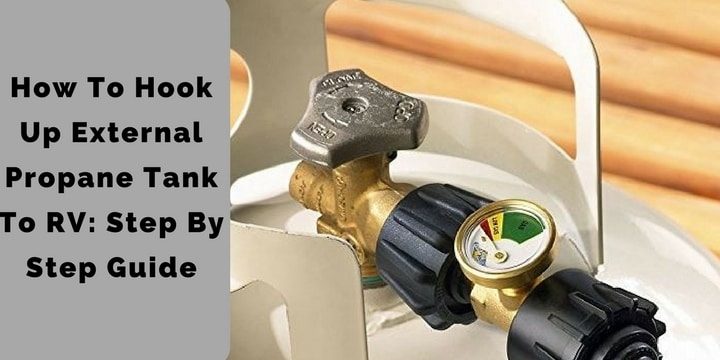How to Wire a 50 Amp RV Plug/Outlet? Step By Step
If you own an RV, one of the most important steps before taking your vehicle out on a camping trip is making sure that it is wired correctly. In this article/blog post, we will be walking through how to wire a 50 amp RV plug.
If you do not have an outlet in the area you want to install your 50-amp RV plug/outlet, you will need to hire an electrician to assist with the wiring. You can visit this blog post for more information on how to choose an electrician.
All of these steps are universal and can apply if you are looking into how to install a 30-amp RV plug as well.
So, here is how to wire a 50 amp RV plug:
1. Turn off the power supply
It is important that you turn off the power supply before beginning any wiring task, including installing an electrical outlet. This prevents anyone from getting shocked or causing damage to your home’s wiring system due to incorrect installation of new products like an outlet.
2. Determine the best place to install your 50-amp RV plug/outlet
Once you have determined this, make sure to mark it on the wall where the outlet will be installed.
3. Install electrical junction boxes
You can do this if you are confident in doing some light wiring on your own or by hiring an electrician. The choice will depend on each individual’s skill set and his or her comfort level. You need to make sure that the junction box is securely fastened to the wall where you want your outlet installed.
4. Make space for wiring; install electrical boxes
After you have determined the location of your new 50-amp RV plug/outlet, it is important to make sure that there is enough room for wiring and electrical boxes to be installed.
5. Install the outlet first
You should always install a new outlet before wiring any other products into place; this includes installing an extension cord. If you want an exterior 50-amp RV plug/outlet, then you may need to hire an electrician to install it.
6. Wire with copper
After you have installed the electrical box and the news outlet, you can begin wiring and installing additional products like a 50-amp RV plug/extension cord for your vehicles. Make sure that all of your connections are secure and tight so that there is no chance of sparking.
Video Overview: Install an RV Power Outlet / Install RV Outlet At Home / 30 or 50 Amp RV Outlet DIY / How To
>> You may also like:45 RV Accessory Must-Haves for Your Travel Trailer<<
All set? Let’s go!
-First of all this 50 amp RV plug/outlet is different from your home’s. An RV circuit breaker has to be rated with 50 amps, but most times the breakers for normal electrical fixtures are 20 amps only. So, what you need to do is combine two devices on one circuit breaker by adding a double pole or double-throw switch at the sub-panel of your RV.
-The following circuit is the wiring diagram you need to wire up your 50 amp RV plug/outlet. As it can be seen, both wires of a device are directly connected to the double pole switch. This means that both devices will receive power when the circuit breaker attached to this switch is on. When you press the button of the double pole switch to turn off the power of one device, both devices will lose their power. This means you have successfully wired your 50 amp RV plug/outlet!
50 Amp RV Plug/Outlet Wiring Diagrams:
-The wiring of 30-amp and 50-amp outlets are the same as mentioned above except for a few subtle differences. The 30-amp outlets have only one breaker and a neutral wire, but a 50-amp has two breakers and both four of its wires are hot.
Video Overview: Installing a 50 Amp RV outlet at your home – Why Not RV: Episode 2
Let’s take a look at the wiring of a 50 amp RV plug/outlet:
-In this diagram, both 120 VAC circuits of an outlet for 50 amps are depicted. As each circuit supplies up to 20 A, you can use it to connect two separate devices. For the purpose of this diagram, both circuits will control one device. The left side circuit has its neutral wire connected directly to the silver screw on the outlet and hot wires attached to one pole of a double-pole/double-throw switch.
-The right side circuit is the same as the left one except for a few things. First, it has both hot wires connected to the double pole/double throw switch’s other pole. Also, there are two extra neutrals and a ground wire connected to another double pole/switch which serves as a safety device to turn off the power completely out of the box.
Next, let’s check out the wiring of a 30 amp RV plug/outlet:
-This circuit is almost the same as that for 50 amps except for breakers and two extra wires which are used to distribute power evenly between both hot legs of an outlet. This way if one 20 A breaker breaks down, all devices connected to the outlet will be switched off.
>> You may also like:Worst 5th Wheel Brands to Avoid <<
Safety Tips
- Always use an electrician’s tape while wiring. It has many advantages, including insulation and marking wires.
- Make sure you start with a good ground point before beginning your work. This will help keep all your lights bright while working in this field of electricity.
- If you have any doubts regarding wiring, you can always get a professional’s help.
- Never try to wire up a 50 amp RV plug/outlet on your own unless you have been trained or have done it several times before. You might end up injuring yourself severely.
Conclusion:
The basic knowledge needed to wire an RV plug/outlet is enough for you to connect two devices on one circuit. However, if you are careless or don’t want to take the risk of wiring it yourself, hire a professional electrician.
You can check out other complicated circuits involving high power bar heaters and several outlets. Wiring an RV outlet is not very difficult to do, but it does require some additional time and effort that you might want to consider hiring a professional electrician for.
Electricians are trained professionals who have the knowledge and also have all of the tools necessary for wiring projects like this. Always follow all safety guidelines and instructions.
> You may also like: 15 Most Underrated National Parks in America <<
Most RV beginners learn this the hard way. Don’t.
🚐 Start RV Living the Right Way (Instant Download)Instant download • Secure checkout • Beginner-friendly

